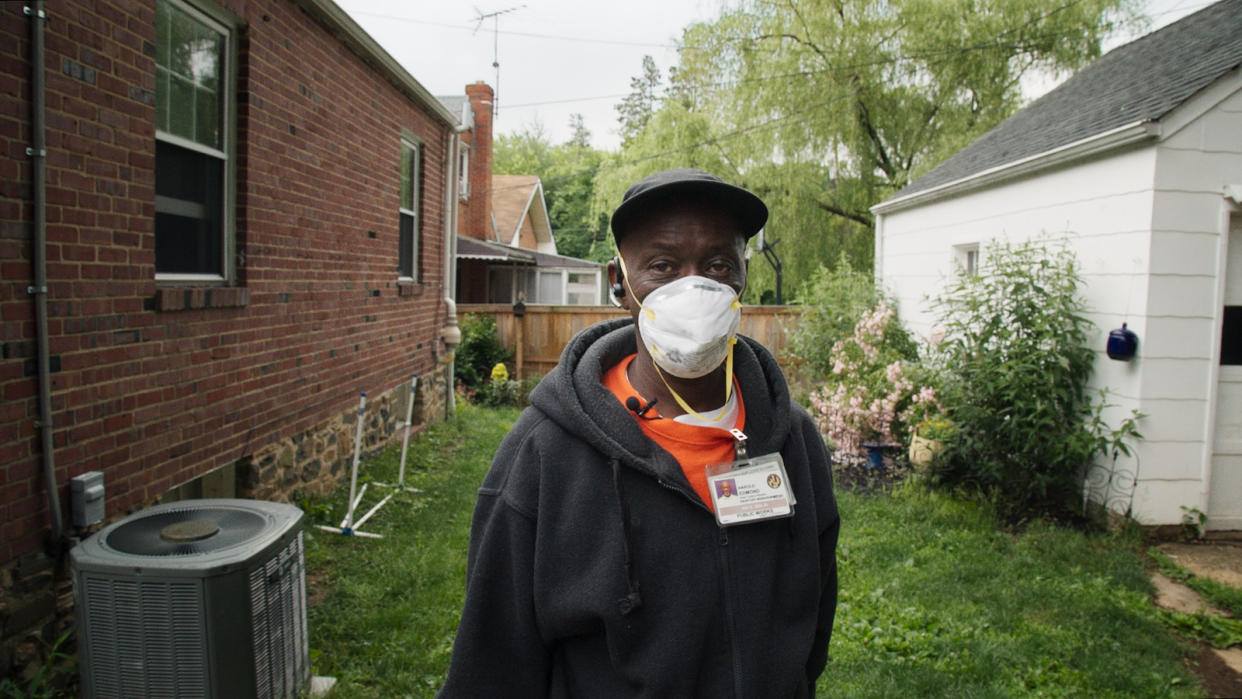Rat Film

Those expecting to learn much about rodents may smell a rat after seeing “Rat Film.” Theo Anthony’s documentary is ostensibly about the unpopular pest, but really just uses that hook to draw us into something entirely about humankind. This nonfiction collage is part early Errol Morris-like appreciation of a community (namely Baltimore) through a few of its more eccentric residents, and part film essay a la Chris Marker, indicting historic civic policies that have kept the underprivileged from improving their lot.
Artfully assembled and often entertaining, the diverse whole nonetheless doesn’t quite gel, with the film finally coming off as somewhat pretentious and heavy-handed. Still, its scattered critical plaudits on the festival circuit will help draw curious viewers to Cinema Guild’s limited theatrical release.
“It ain’t never been a rat problem in Baltimore; it’s always been a people problem” says Harold Edmond, a garrulous, personable government exterminator who’s the primary guide here. As he visits various residents complaining of furry infestations, and not infrequently waxes philosophical, the film expounds upon his insights in various ways. We get flashbacks (narrated in an almost robotically flat tone by Maureen Jones) to both scientific experiments and city politics that helped keep this Maryland metropolis segregated not just by race and class, but blight and sanitation (or the lacks thereof).
Psychobiologist Curt P. Richter saw the rat as an ideal laboratory subject, though it’s suggested here his larger sentiments at times came uncomfortably close to the kind of eugenics then favored by Nazis, among others. When a younger Johns Hopkins colleague subsequently determined that practices that might rid neighborhoods of unsanitary pests — such as bringing housing up to code, improving sewage systems, making sure every home had running water, etc. — might also raise the general living standards of human residents, Richter seemed vehemently opposed to the ideas. We also glimpse how government and private-sector policies redlined areas designated as undesirable, denying them the opportunities for improvements available elsewhere. These inevitably reinforced social divisions, exacerbating the decline of slums in order to preserve the segregated superiority of “better” neighborhoods and their populations.
Needless to say, the rat problem remained concentrated in those “undesirable” areas. A noted experiment on a Maryland farm by behavioral researcher John B. Calhoun enclosed rodents in a habitat where all their needs were met, but conditions were badly overcrowded. Eventually the collective stress led to unnatural hierarchies, chaos, violence, even cannibalism. The correlation is clear — Baltimore’s government policies have brought little change in the concentration of crime, poverty, neglected properties and ill health in particular neighborhoods over the past century. The Washington Post recently reported that in 15 such communities in the city, average life expectancy is lower than in deprivation-choked North Korea.
These are compelling connections, but the diverting if somewhat self-consciously quirky progress in “Rat Film” tosses them into a mix with many more trivial, sometimes arbitrary elements. There’s the vaguely condescending amusement with which Anthony observes citizens who keep rats as pampered pets, plus the weird sportive glee exhibited by others who hunt rodents (with everything from baited fishing poles and airguns to baseball bats) in backyards and alleys, displaying their kills like trophies.
We get an odd detour into the legacy of a 1930s socialite, called “the mother of CSI,” who used her wealth to create meticulous miniature dioramas of unsolved murder scenes. Even less clear in terms of relevancy are recurrent glimpses of a computer program that crudely maps the streets of Baltimore, and of an auto speedway whose competing vehicles pour out maximum polluting exhaust.
If the moment-to-moment point is sometimes obscure, the overall effect is all too obvious, needlessly underlined by a long final shot of a snake devouring a live baby rat: In our society, the powerful prey on the powerless. Its narrator’s closing leap into a scenario of apocalyptic fantasy cements a sense that “Rat Film” has ambitions (and pretensions) that surpass its cohesive intellectual grasp.
Nonetheless, much of what’s juxtaposed is intriguing, and there’s considerable aesthetic care put into the packaging, from the often handsome cinematography (by Anthony and Tyler Davis) to Baltimore-based composer Dan Deacon’s original score.
Subscribe to Variety Newsletters and Email Alerts!

